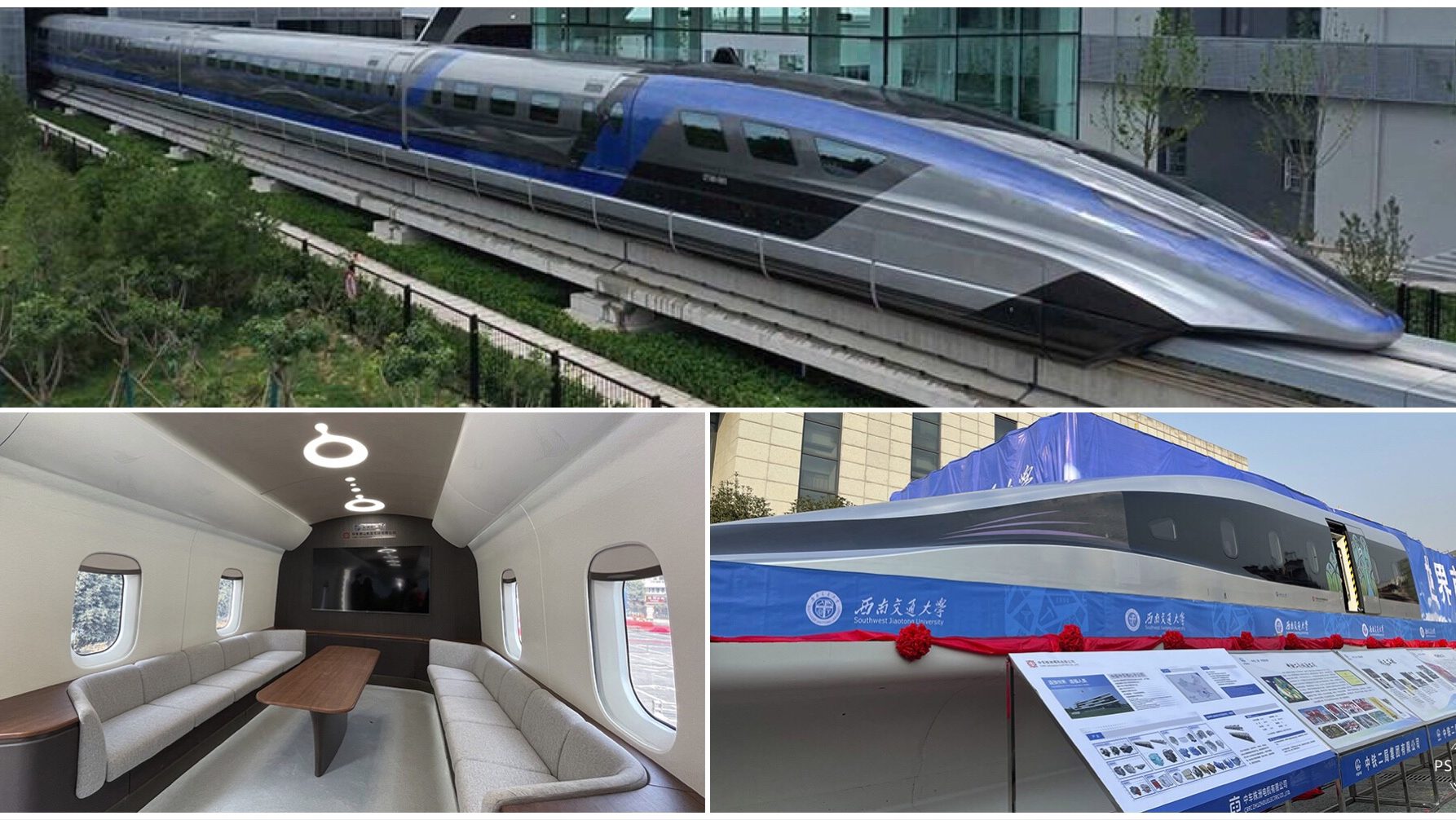China Debuts Its New Streamlined 380 mph Maglev Bullet Train
This new Maglev Train for the moment is the World’s Fastest Land Vehicle.
At the beginning of the 21st century China had no high-speed railways.
Slow and often uncomfortable trains plodded across this vast country, with low average speeds making journeys such as Shanghai-Beijing a test of travel endurance.
Today, it’s a completely different picture. The world’s most populous nation has — by some distance — the world’s largest network of high-speed railways.
No fewer than 37,900 kilometers (about 23,500 miles) of lines crisscross the country, linking all of its major mega-city clusters, and all have been completed since 2008. Half of that total has been completed in the last five years alone.
China Railway says its new bullet train will drastically help cut down on travel time. At top speed of 385 mph, the vehicle will be able to complete the 754-mile trip between Beijing and Shanghai in just two-and-a-half hours, that same trip takes just over three hours by plane, five-and-a-half hours by current high-speed rail options or 12 hours by car. That could make the train an especially attractive travel option for business travelers in the country.
The network is expected to double in length again, to 70,000 kilometers, by 2035.
With maximum speeds of 380 kilometers per hour = 236.121 miles per hour on many lines, intercity travel has been transformed and the dominance of airlines has been broken on the busiest routes.
By 2020, 75% of Chinese cities with a population of 500,000 or more had a high-speed rail ink.
Spain, which has Europe’s most extensive high-speed network and occupies second place in the global league table, is a minnow in comparison with just over 2,000 miles of dedicated lines built for operation at over 250 kph.
In contrast, the UK currently has just 107 kilometers while the United States has only one rail route that (just about) qualifies for high-speed status — Amtrak’s North East Corridor, where Acela trains currently top out at 240 kph on expensively rebuilt sections of existing line shared with commuter and freight trains



